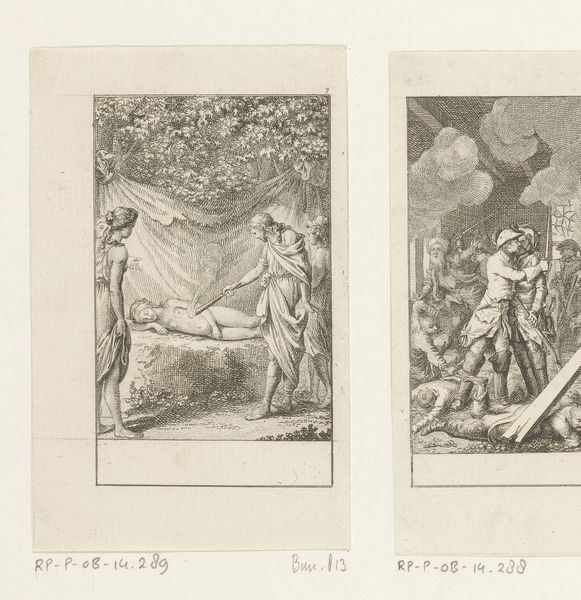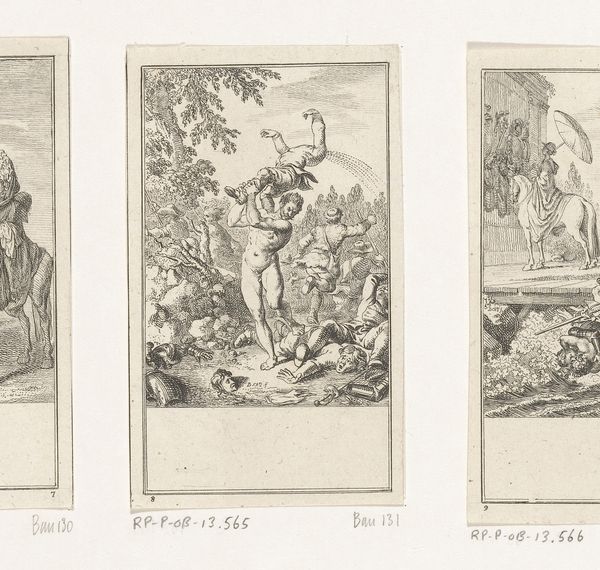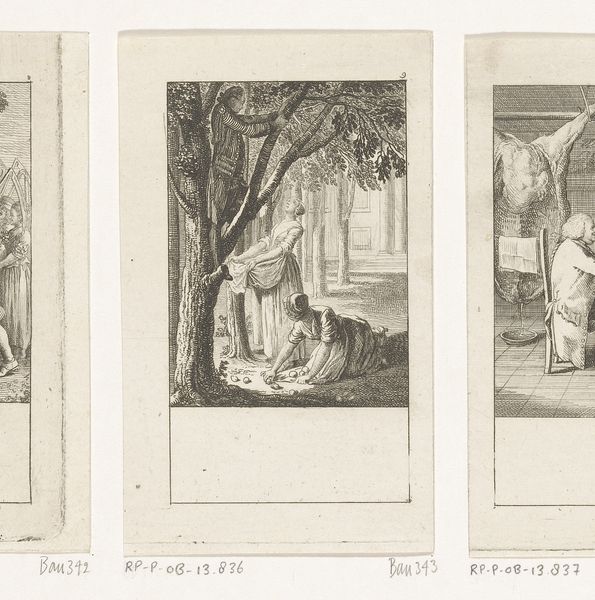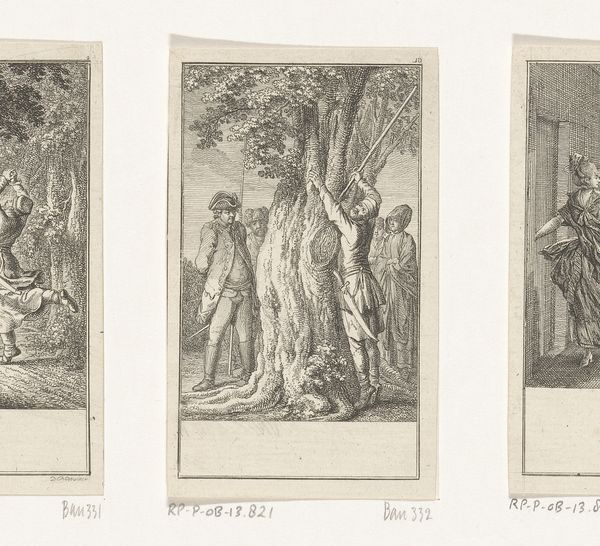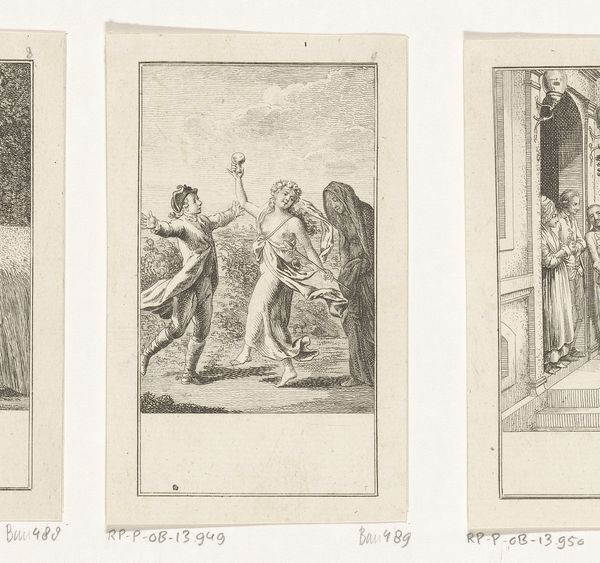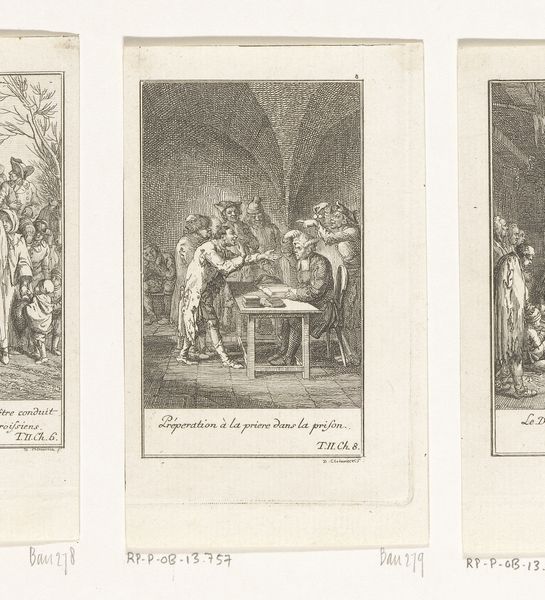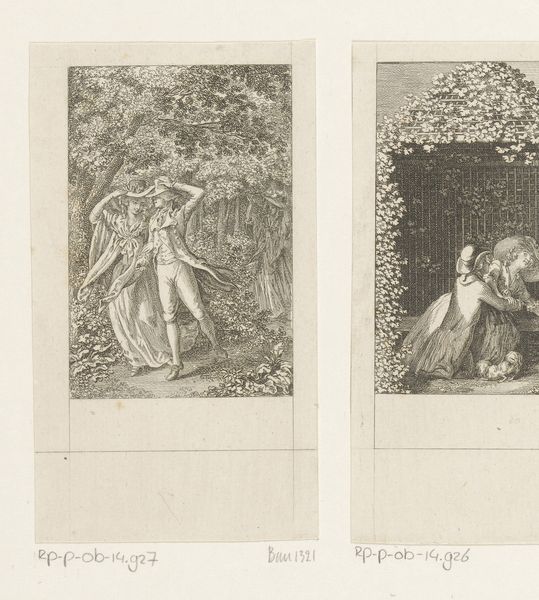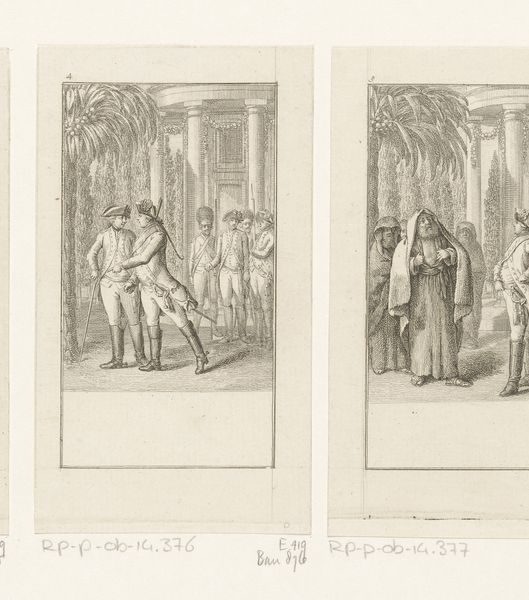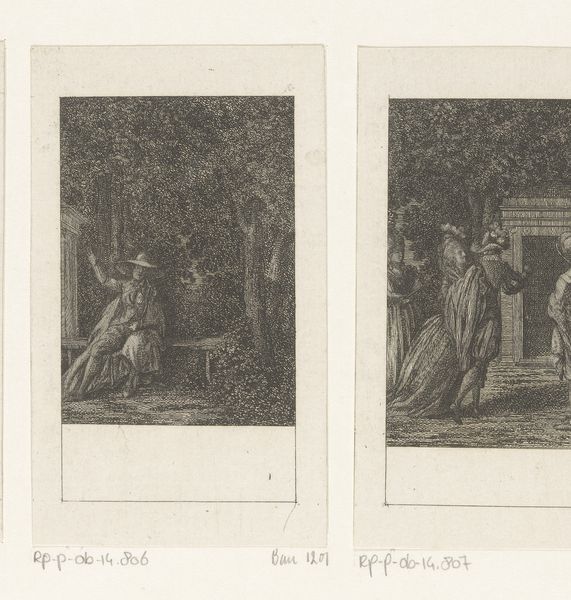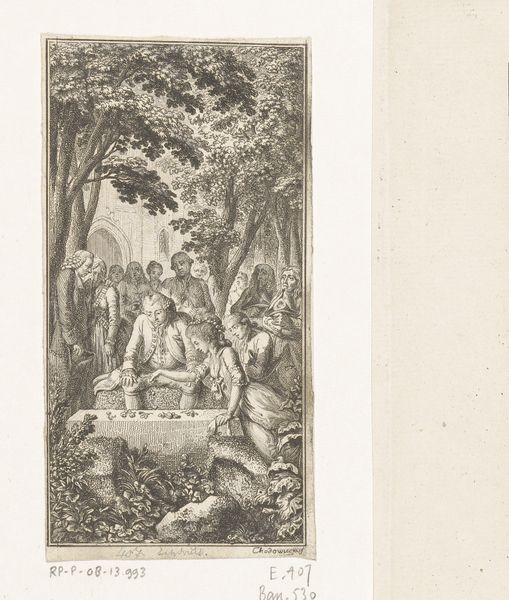
print, etching
# print
#
etching
#
landscape
#
etching
#
forest
#
genre-painting
Dimensions: height 107 mm, width 65 mm
Copyright: Rijks Museum: Open Domain
Daniel Nikolaus Chodowiecki created this print, entitled 'November', using etching, sometime in the late 1700s. In this process, a metal plate, most likely copper, is coated with a waxy, acid-resistant substance called a ‘ground’. The artist then scratches an image into the ground with a needle, exposing the metal underneath. The plate is then immersed in acid, which bites into the exposed lines, creating grooves. The depth of these grooves dictates how much ink they hold, and therefore how dark they appear on the final print. In ‘November,’ we see the tonal range that etching can achieve, from light grey to near black. Etching was a favored reproductive technique in the 18th century, as it allowed for relatively quick and inexpensive duplication of images. Consider the skilled labor involved in producing the metal plates, preparing the ground, and carefully controlling the etching process itself. These are the hidden costs that are embedded in this seemingly simple print, reminding us that all artworks are products of specific social and economic conditions. Only by looking closely at these details can we truly appreciate the artistry involved.
Comments
No comments
Be the first to comment and join the conversation on the ultimate creative platform.

